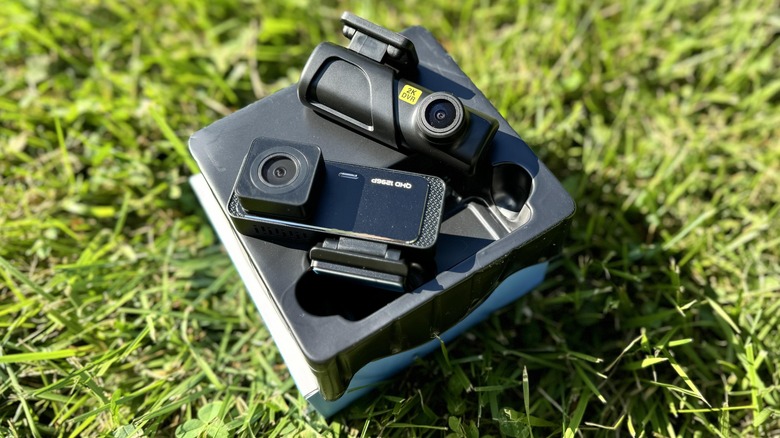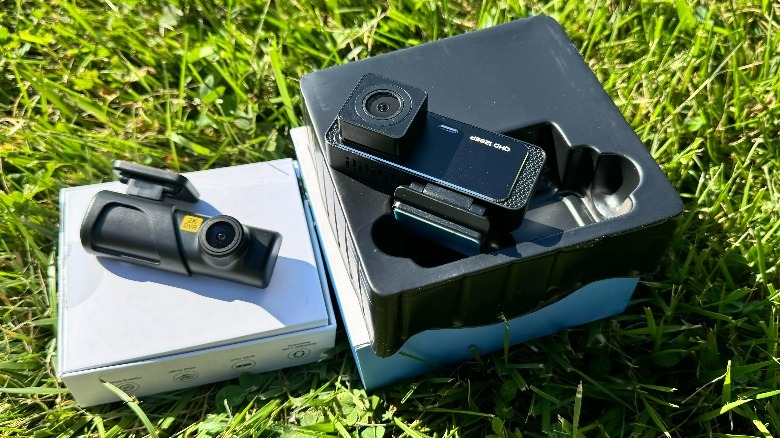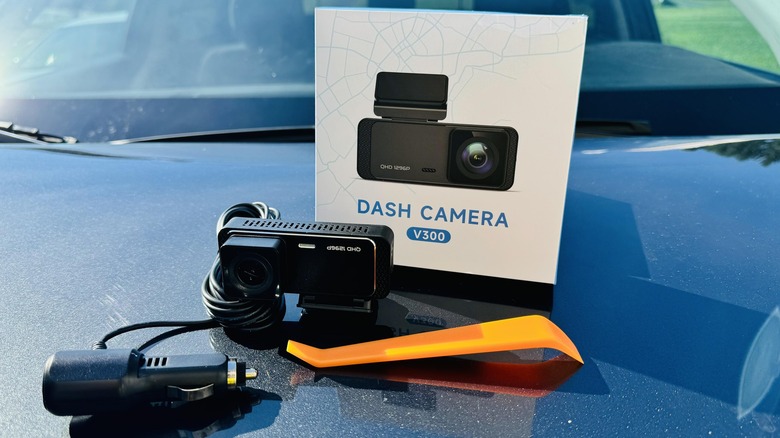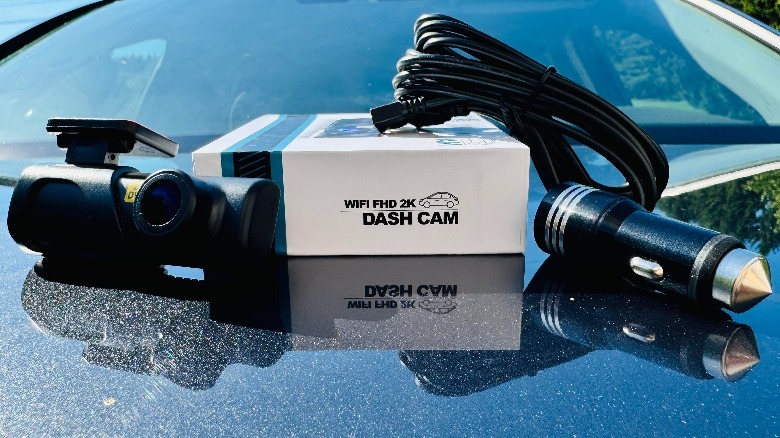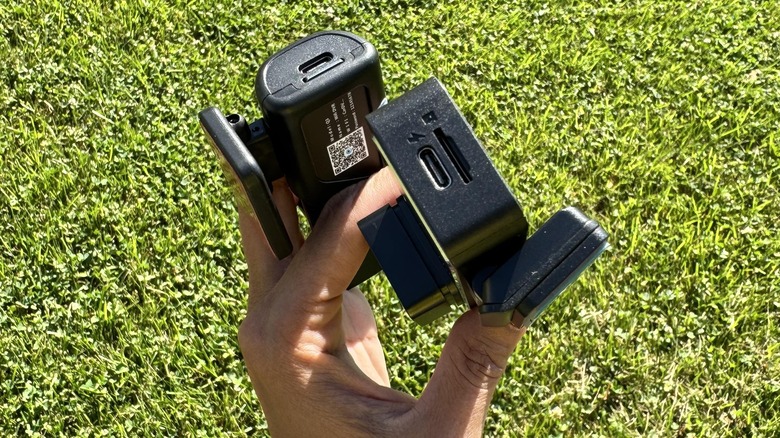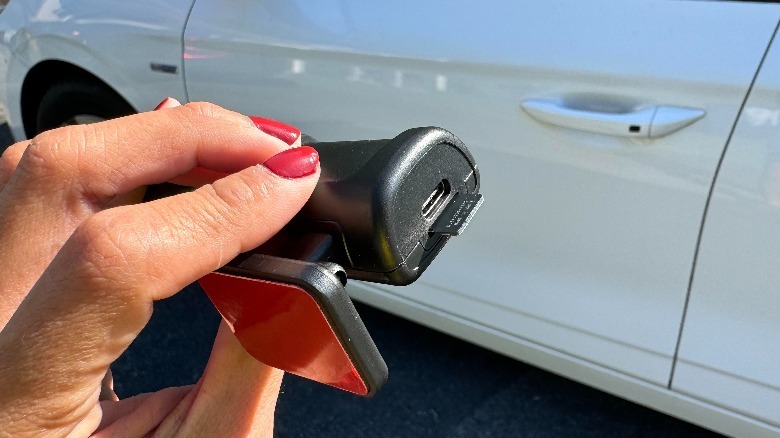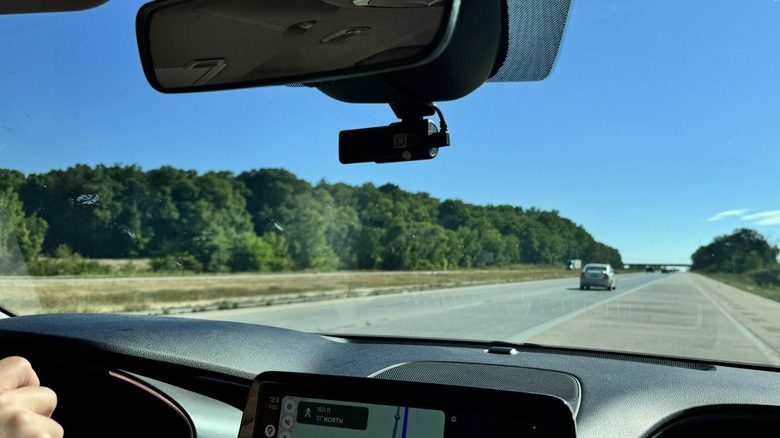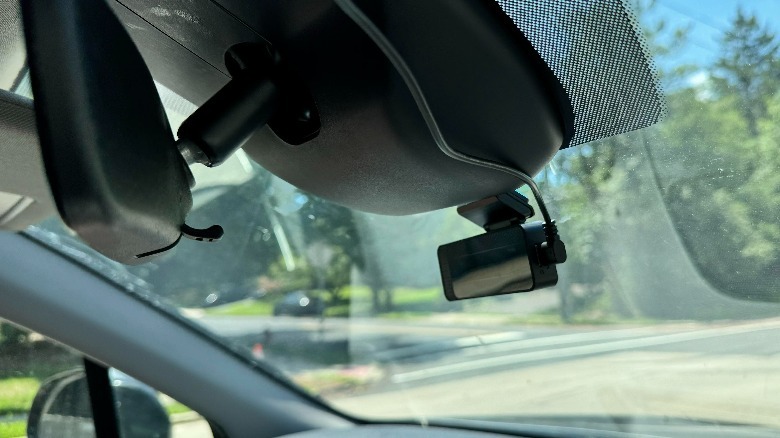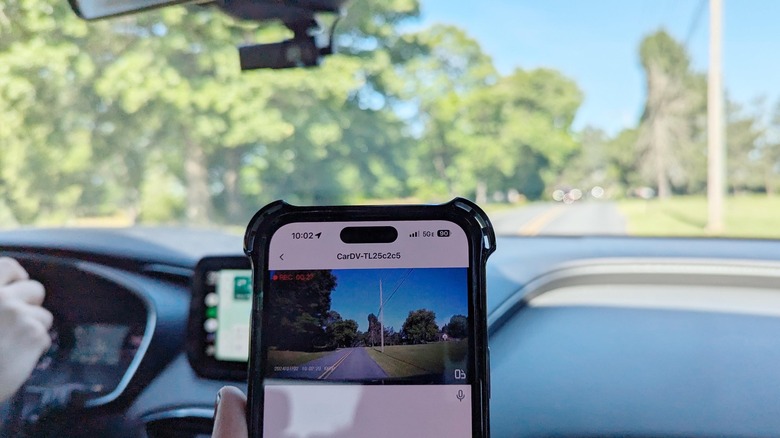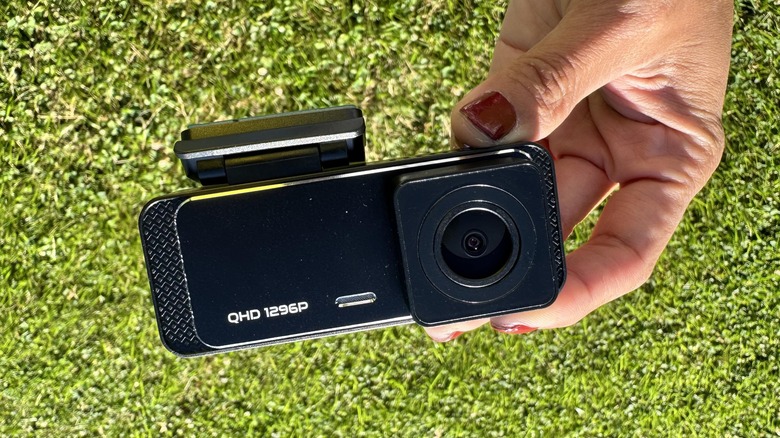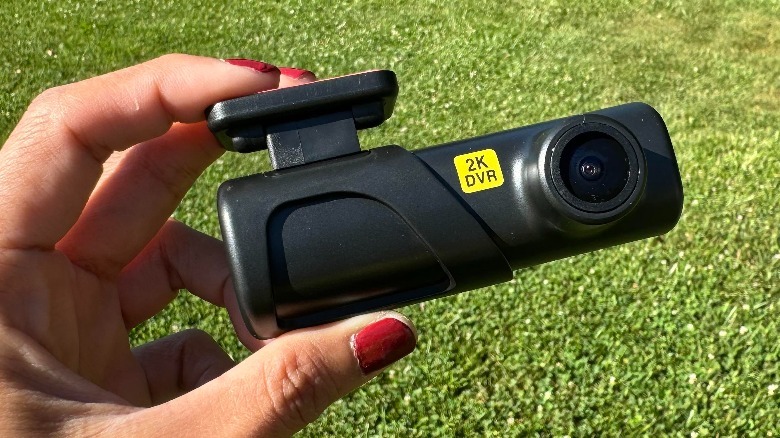Dash Cams On A Budget: Are They Enough To Protect Your Car Or Should You Upgrade?
We may receive a commission on purchases made from links.
Driving a car requires a lot of presence of mind and an innate ability to do several tasks at once. Apart from needing to know how to operate the vehicle in a safe way alongside other motorists on the road, you also have to think quickly and know what to do in case something unexpected happens while you're driving.
For times when things out of your control occur — like when your brakes fail, for instance — and potentially lead to an accident, having a dash cam can come in handy. It can record footage that could be crucial in quantifying your role in a collision, or maybe disputing a traffic ticket issued against you. It can monitor the movement of other motorists and protect you from false claims. When wired to your car, it can record video while it's parked to protect against theft or vandalism. On a more positive note, it can capture footage while you're on a fun road trip or a scenic drive.
If you're considering buying a dash cam for your car, you should be able to easily find one, no matter the price point. Much like any other electronic gadget, spending more on a dash cam may give you a wider slate of features and maybe record video in better quality. Can you make do with an affordable option, though?
To find out, we ordered two affordable dash cam options that are highly rated on Amazon to see how they perform: The Q3 Dash Cam and the V300 Dash Cam.
Unboxing and first impressions
The V300 seemed the bigger of the two, although it was still compact at 3.3 inches long and around 2 inches tall including the attached swivel base. The charger — designed to plug into the cigarette lighter port — was sufficiently long, 11.5 feet, according to its Amazon listing. The dash cam came with a quick connection guide and user manual that was simple enough to understand, as well as an electrostatic sticker and a spare adhesive pad for the base. While the package also had a useful pry tool that'd make it easier to tuck in the cord, an SD card was not included in the set. I ordered a separate 126 GB micro SD card while it was on sale for the purposes of this hands-on, so it wasn't a dealbreaker.
The Q3, on the other hand, did include a 65 GB memory card. Size wise, it was a bit longer at 3.5 inches and 1.75 inches tall with the base, which was conveniently detachable. The charging cable was a bit shorter, but the cigarette lighter charger actually came separately with two USB slots, giving you the option to charge something else simultaneously. It also came with a concise user manual, an electrostatic sticker, and a screwdriver.
Given the low price I got these dash cams for — both were around $30 when I purchased them two months ago — I wasn't expecting to unbox a couple of super snazzy-looking gadgets. I did get what I was hoping for, though: palm-sized, lightweight, and with almost identical accessories included.
Installation and setup
Based on how brief the dash cam user manuals were in terms of setup instructions, I was assuming they would both be a breeze to put together. That requirement was essential to me since we were actually out of town and using a rental vehicle when I tested these dash cams, so I wanted something simple and basic to operate and just as easy to detach.
Lo and behold — the steps were easy to follow. All I had to do was pop in the memory card into the camera, position its mount a bit below the rearview mirror, plug in the charging cord, and tuck the cord through the seam of the windshield and dashboard so it doesn't obstruct the view of the road. I stuck the dash cam to the windshield using removable adhesive for easier testing and switching between the two models.
Since the cam had no built-in battery, the vehicle had to be powered on for it to turn on. The memory card also needed to be formatted before using, which was easy to do through the dash cam's mobile app. Setting up a connection between the camera and the app was simple enough. As soon as I found the dash cam's Wi-Fi network and connected my iPhone to it, the dash cam live stream kicked on.
Driving with a dash cam
As far as I could tell, as long as a successful connection between the camera and the mobile app was established during set up, the device should continue recording even if you exit the app or don't have your mobile phone with you. You do have the option of viewing the live stream through the app for the purposes of checking its recording status. However, it makes more sense to just keep your eye on the actual road and check the device's indicator light to verify that it is indeed recording.
Both the Q3 and V300 dash cams worked quite well. During setup, each camera live stream showed a wide enough field of view to capture the whole road ahead. Having them active wasn't distracting at all — the fact that I even forgot that we had a dash cam installed after only a few minutes of driving was a great sign.
Reviewing the footage
During our three-hour long drive from Hershey, Pennsylvania to New York City, the cam we tested was able to record several video clips, which were accessible via the cam's companion app. While I had the option to save video clips directly on my mobile phone through the app, I found it more convenient to just take the memory card with me after the drive and check out the footage on my computer.
The quality of the recorded footage of both dash cams were quite good, considering the price point of the devices. I wasn't looking for cinematic resolution anyway. As far as I was concerned, I wanted a camera that occasionally kicked on during my drive and upon reviewing the saved files, it did just that — it even recorded audio. The 65 GB memory card was actually sufficient enough, but it's nice to know that I can bump it up to 128 GB if I ever wanted to.
Does a budget dash cam fit the bill?
I had very simple requirements coming into this dash cam hands-on test. I wanted a device that was simple to install, easy to operate, produces good enough video quality, and is affordable. These dash cams checked all the boxes and more.
Both actually came with 24/7 parking monitoring features, which is a nice safety option when you have to park your car in a public and unfamiliar space. However, getting this feature to work, so the camera records overnight, requires using an accessory hardwire kit — which you can purchase on Amazon as well — so you can directly connect it to your car's battery. While it may be something I'd consider doing once we got home and back to our own vehicle, the process was too big a production to do while on vacation. We also rarely drove at night during our trip, but both the Q3 and V300 dash cams came equipped with night vision capabilities, which supposedly produced clear footage even in low-light situations.
At the end of the day, either of these cams should suit any car driver with very basic dash cam needs. If you have the time, consider hardwiring your cam of choice to your car battery to take advantage of additional parking features. To date, the V300 Dash Cam is heavily discounted at $30 with an additional $10 coupon you can clip; it's also one of the best-selling car on-dash mounted cameras on Amazon. Meanwhile, the original listing of the Q3 Dash Cam I purchased from is no longer active, but there are other third-party sellers on Amazon that offer the exact model for $40, such as the one I linked to at the beginning of this article.
